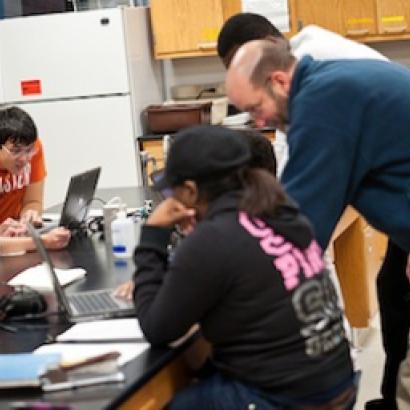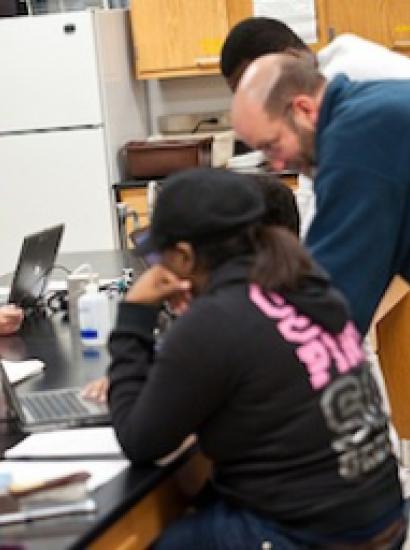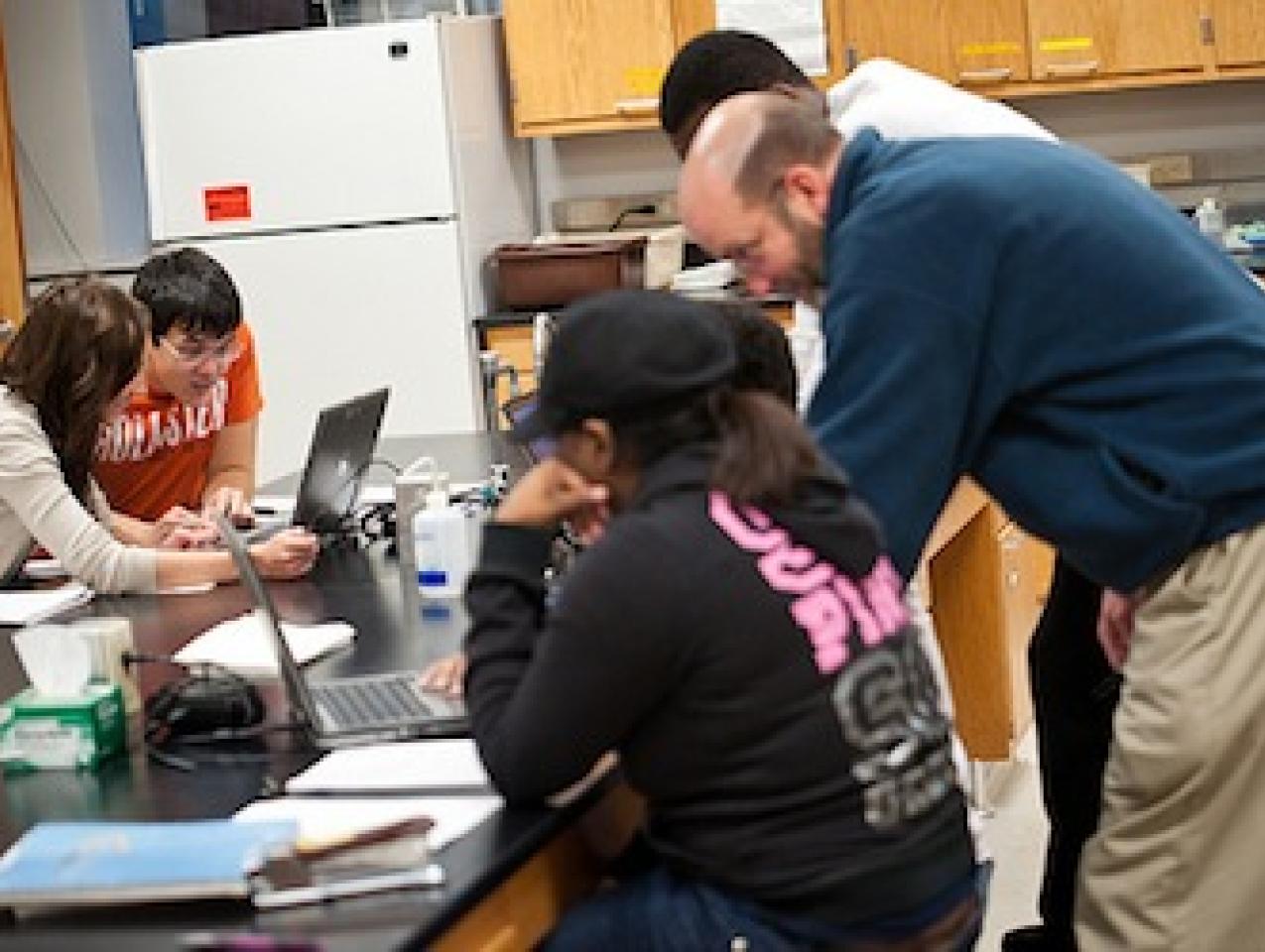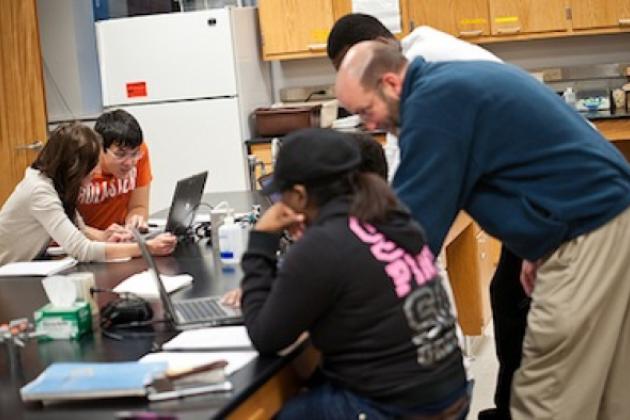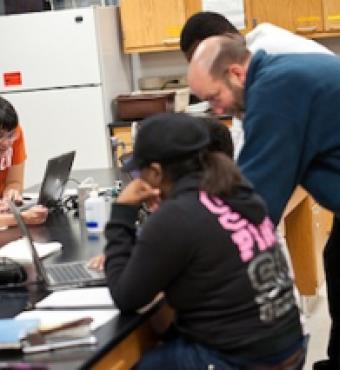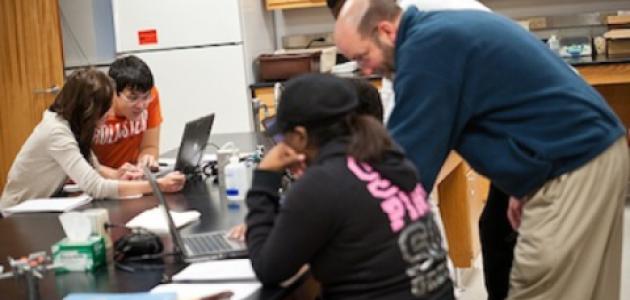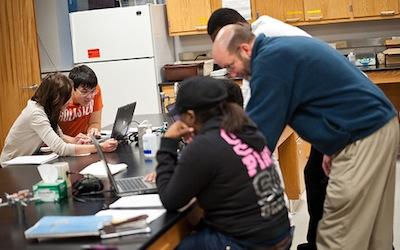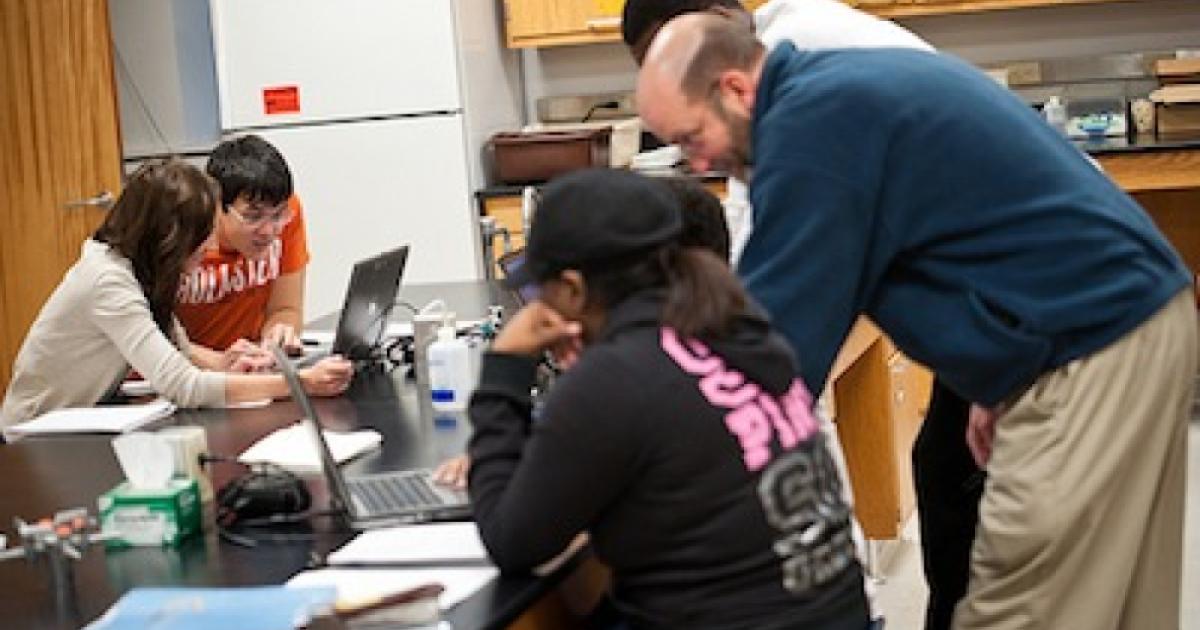Editor's note: In this essay, the author blends prediction with prescription to paint a vivid picture of what American education will look like in 2030. The essay is from an online publication of the Hoover Institution’s Koret Task Force on K-12 Education, American Education in 2030.
In 2012 the American education system was doing what it did best. It was surviving. For decades, it had been subjected to blistering—and well-justified—criticism for its relentlessly poor performance. But thanks to powerful defenders in politics, it had weathered the storm like a rock, virtually immune to the efforts of reformers to bring about major change.
The school system of that era really had two problems. It had a performance problem. That much was obvious. But it also had a political problem—which, in the grander scheme of things, was more fundamental than the performance problem itself because it prevented the performance problem from being addressed and resolved. Reformers had been butting their heads against a wall of power, winning a few battles along the way but consistently losing the war. The system was a disappointment. It was failing the nation. But it was strong and resilient where it counted—in power politics—and it doggedly prevailed.
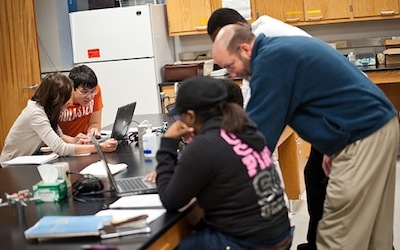
Photo credit: Jeremy Wilburn
Unbeknownst to almost everyone at the time, however, the American education system of 2012 was in the early stages of a revolution. The ingredients of change were barely visible, and the revolution would unfold slowly over a period of decades. By 2030, though, it was virtually complete: radically changing the education system and shattering the structure of political power that had long preserved a failing status quo. It was a revolution in education. But it was also a revolution in politics—without which the revolution in education could never have succeeded.
How did all this happen? In particular, how did the system’s power structure—so formidable for so long in blocking change—come tumbling down, and what did the new politics of education that replaced it really mean for children and schools?
The Politics of Education in 2012
In 2012, the structure of power that protected the educational status quo had been in place for roughly three decades. Before then, the leaders of public education had traditionally been its local superintendents, but they lost their preeminence during the 1960s and 1970s, when many states adopted laws to promote collective bargaining for teachers and other public sector workers. When the dust cleared by 1980 or so, teachers in virtually all school districts of any size (outside the South) had been organized, and unionization—and union power—had become the norm.
The teachers unions were now the political leaders of public education. And they were far more powerful than administrators had ever been, by orders of magnitude: They had millions of members, enormous financial resources for campaign contributions and lobbying, small armies of activists who manned the electoral trenches in virtually every political district in the country, and sophisticated organizations for taking aggressive action at the federal, state, and local levels.
In a twist of historical fate, the teachers unions were consolidating their power at the same time that A Nation at Risk was warning of a “rising tide of mediocrity” in America’s schools and mobilizing the nation for a reform movement that would prove unprecedented in scale and scope. These efforts to vastly improve the public schools went on for decades, and they became the defining feature of the modern era in American public education.
Yet if this was an era of reform, it was also an era of disappointment. Indeed, the die was cast from the very beginning. Reformers were dedicated to bringing fundamental change to public education. But the teachers unions, driven (as all unions are) to protect the occupational interests of their members, found real change to be threatening and used their enormous power to try to prevent it. Throughout, they were aided by the checks and balances built into American government, which made new laws difficult for reformers to enact—and relatively easy for powerful opponents to block.
Over the decades, the unions proved to be maestros of political blocking. When “reform” happened, it was almost always because the unions had opened the political gates for mainstream efforts that they found acceptable: greater spending, smaller classes, higher standards, more professional development, and the like. Reforms that promised major change were either blocked entirely, or they were so weakened that their potential was never seriously tapped. By 2012,
—Accountability, even as strengthened by No Child Left Behind (a rare union defeat), had few real consequences for poorly performing schools—and none for bad teachers
—Charter schools labored under severe restrictions on their numbers and funding and, despite sky-high demand, enrolled just 3 percent of public school children
—Voucher programs for disadvantaged families were small and uncommon, and the few in existence were continually under union attack—leading to the demise of programs in Colorado, Florida, Arizona, and Washington, D.C.
—Pay for performance plans were aggressively resisted and, when adopted (which was exceedingly rare), relied on criteria that had little or no connection to how much students actually learned in the classroom
—Efforts to get bad teachers out of the classroom—which required simple modifications of state laws and local union contracts—went absolutely nowhere.
After a quarter century of “reform,” what the nation got from its political process was an overflow of rhetoric, lots of pointless legislation, and a gigantic bill for untold billions of dollars. The system in 2012 continued to perform poorly. It continued to disappoint. And reformers were largely impotent. The politics of blocking had them beat.
How Technology Will Change Everything
Although few were aware of it, the politics of education was then at a tipping point. In the years that followed, the teachers unions were caught in a slow downward slide. And as their power declined, they were less and less successful at standing in the way of reform. By 2030, the politics of blocking was largely a thing of the past and the nation was on its way to quantum-level improvements.
In the normal course of events, this wouldn’t have happened. Power, after all, is its own protection. For it not only allows the teachers unions to block or weaken major reforms of the education system. It also allows them to prevent reforms—of collective bargaining laws, for example—that would take their power away. So it isn’t taken away. And they stay powerful. And they continue to block. This is the Catch-22 that perpetuates the status quo in normal times.
But because of an accident of history, the times were not normal. And change did come. In 2012, the nation was in the midst of a historic revolution in information technology that was profoundly transforming the fundamentals of human society throughout the world: how people interact and communicate, how they collect information, how they seek knowledge, how they transact business, and much more. This revolution couldn’t help but have profound implications for the way students learn, teachers teach, and schools are organized. And as John Chubb explains, these things came to pass: the explosion in technology brought with it a vast array of dazzling innovations for education, and they were enormously beneficial—and transformative.
Needless to say, the teachers unions fought the advance of technology, just as they had fought all other fundamental changes. And in the beginning, they were fairly successful—for they were hugely powerful, and technology was new and untried. But technology was also different from other reforms.
Indeed, it wasn’t really a reform. Its ideas—and the excitement about them—were everywhere, and they couldn’t ultimately be blocked. They were so forceful and pervasive that they were beyond anyone’s control and were being thrust upon the education system from without. Even in its early years, as a result, technology seeped into the system—slowly and incrementally at first, but inexorably. And then the seepage gave way to bigger, more fundamental change over the decades, generating a wholesale transformation. Here, basically, is how it happened.
Online learning made it possible for education to be customized to each individual child and for underserved constituencies—kids who wanted AP courses, remedial courses, additional credits for graduation, access to specialized coursework, and on and on—to greatly expand their opportunities. So there was a huge demand that only grew with time and quickly expanded to core academic courses in the mainstream curriculum. The implications for social equity, meantime, were profound: for wherever kids were located—from Detroit to Appalachia to Oakland—and whatever their social class or ethnicity, they increasingly had access via technology to the best curricula and educational opportunities the world could make available.
On the supply side, the costs of these dramatic innovations were stunningly lower than those of traditional education because they involved the pervasive substitution of (relatively cheap) technology for (incredibly expensive) labor—which had never been possible before in the history of American education. The entrepreneurial energy was explosive, as new firms flooded into the marketplace, legions of smart people were recruited to work on educational innovations, mavericks within the public sector—entrepreneurial superintendents, future-minded governors—embraced change, and new interest groups (including nonprofits and foundations) lobbied state legislatures to adopt tech-friendly laws promoting online education.
New forms of schooling sprouted up like mushrooms. States set up state-level virtual schools, allowed for a diversity of other providers—some private, some public—and gave all kids the legal right to take as many classes as they needed online. Online charter schools proliferated, attracting millions of students from all across the states—and the nation. Districts began offering their students more and more online options, and they were getting more bang for their bucks by contracting with outside suppliers.
Throughout the country, the modal solution that emerged was the “hybrid” school—many of them charters, some run by districts—in which kids still “went to school” at a physical place, interacted face-to-face with teachers and other students, and continued to participate in art, music, and sports but took roughly 80 percent of their academic classes online. Their teachers no longer had the job of teaching a standardized curriculum to classrooms of thirty kids; instead they had a much more differentiated profession—some teaching online, some overseeing large numbers of kids in computer labs, some tutoring kids one-on-one, some dealing mainly with parents, some in charge of software development, and on and on. The traditional sameness of teaching thus gave way to a much more productive division of labor.
These changes did not happen all at once. They happened gradually—and in the beginning, they were seriously weakened by the unions. Yet the slow seepage was unstoppable. And as it continued, it began to have major political consequences: consequences for the unions’ power—and for their ability to block. This is the second side of the technological revolution. For as things turned out, technology carried with it not only the capacity to transform the way American children were educated but also the capacity to transform the politics of education—and, with it, the levers of authority and law that had long allowed the unions to keep the lid on.
Specifically, as computers and software increasingly took on some (not all) of the teaching, the relentless substitution of technology for labor led to a continuous drop in the ratio of teachers to students and thus of union members to students. This was precisely what the unions had been trying to prevent all along, and it took a big organizational toll. Their power in the past had been hugely dependent on the fact that American education was extremely labor-intensive—which is what kept their membership numbers and dues revenues so high. But with technology taking on so many educational functions previously performed by teachers, the unions’ nightmare increasingly came true: there just weren’t as many workers to organize anymore.
As this substitution was occurring, moreover, technology was also breaking down the geographic basis of schooling because students and (many) teachers—now meeting in cyberspace—no longer needed to be in the same physical location. This dispersal of the teaching force presented the unions with increasingly difficult and insurmountable challenges: with teachers no longer conveniently concentrated in one physical place—easy to get at, in constant social contact with one another, doing the same jobs in the same way—they were increasingly much more fragmented and diversified, making them much more difficult for the unions to organize. Another big blow to their power.
In addition, technology supercharged school choice. Indeed, it became the single greatest force for school choice in the nation’s history: far surpassing the earlier movements for charters and vouchers, generating a vast array of attractive new options to regular public school classrooms—and causing students, money, and jobs to flow out of these traditional union strongholds. The connection between technology and choice, then, dealt another body blow to union membership—and to union money and power.
At the same time, technology was also supercharging the movement for school accountability: generating new data systems and sophisticated new methods of measuring performance, putting the spotlight on poor performance by schools and teachers, and stimulating powerful coalitions—particularly those speaking for disadvantaged kids in big urban districts—to rise up and oppose the unions for resisting productive change. Because of technology and its connection to accountability, the unions increasingly became unpopular and isolated—and doomed to fight their battles alone.
In 2012 the teachers unions had well over four million members and all the money and power that goes along with massive organizations of that size. But technology changed all that. By 2030 the unions had less than half as many members—and (in inflation-adjusted dollars) less than half the dues money. It didn’t happen overnight. But year by year, the unions found their political power ebbing away—and the educational world they had long controlled slowly slipping away from them.
Throughout, no one factor was fatal or decisive. All these ramifications of technology worked together, in the same direction and at the same time—and it was their combination that proved so consequential in loosening the unions’ grip on the political process. They were also aided, along the way, by a positive feedback effect. For as union power declined somewhat with time, and as they became less able to block, technological innovations and other sources of change were more likely to make it through the political process—and as they did, they undermined union power still further, making it even more difficult for them to block and even easier for reforms to get adopted. This was a process that fed on itself. By 2030, the unions had essentially been swept aside as major obstacles to change.
The New Politics of Education
The world of American public education is wholly different as a result. With the politics of blocking substantially weakened, the door is now open to a broad range of reforms—not just those that involve online schooling or are somehow high tech. Without union obstruction, the way is paved for the design of more effective accountability systems: systems that have meaningful consequences for poor performance and are purposely built to hold schools and teachers accountable for teaching kids what they need to know. The way is also paved for more expansive charter systems, backed by rules and financial arrangements designed to encourage (rather than undermine) their success; for additional voucher and tax credit programs that give new options and desperately needed financial assistance to disadvantaged kids; for sensible new pay systems that reward productive teachers and abandon the archaic single salary schedule; for new laws and personnel rules that make it easier to get mediocre teachers out of the classroom; and on and on.
Technology, then, has proven to be much more than a source of promising innovations for student learning. In the grander scheme of things, its real importance is that it has literally been a force of liberation. It has freed policy makers from the unions’ iron grip, and it has allowed them for the first time in decades to put children first—and to insist on a school system that is truly organized to provide the best education possible.
Virtual teaching is everywhere in college courses but has not taken over. I dont see this happening as a revolution, especially when parents need to drop kids off to go to work. Would like to see teacher's unions lose powers, but this doesn't hold water.
---Robert Logomasini
Technology used properly permits advances in the world condition that benefit mankind. Replacing teachers' unions through technology represents a significant positive by removing politically correct liberal bias from the educational environment. However there is a sociological negative related to this change. Do you relate to any specific teacher who made an impact on your life because they went beyond the call of duty to help you? I do. That extraordinary effort of one human helping another may be lost depending upon how technology is used in the classroom. Whether or not the removal of teachers' unions is dependent upon technology replacing the teacher in the classroom or not depends on our will to change union conduct with regard to our children's learning experience. I think technological advancement is a good thing and if it is the only way to get the unions out of our schools so be it. However, I would rather the unions were removed by society deeming them to be counterproductive to the learning experience. We have lost so much of our humanity already that it seems a shame to let the aggressive nature of the socialist democrat liberal movement destroy the human element of the teaching profession.
---Mark Becker.
This article is right on the money with its projections for the wave of technology that is going to hit public education squarely between the eyes. This year I enrolled my four children in Cyber school for the first time because the quality of public education in my area is declining. In addition, the lack of response of the school district in addressing educational deficiencies and teacher issues is the primary reason for this move. All of my children are gifted…some have a GIEP and some do not (primarily due to the whims of 1-2 teachers who would not recommend them despite high grades and extracurricular achievement). I will vote with my feet and my tax dollars. In Cyber schooling, if my child has the grades, prerequisites, and the desire, he can take any class he wants without having to have a biased teacher recommendation. It is up to him to succeed, and at the pace that he wants to work. There is a huge amount of freedom in this, and it supports the American Dream - you work hard, you put in the effort, you reap the rewards. No longer will they be held back by a teacher or system that just wants them to be quiet, and forces everyone to learn at the same pace. Any number of parents that I know would make the difficult choice to work less or quit work if it means that their children will get the quality of education they need to succeed. The amount of money that is transferred from the public school to the Cyber school boggles the mind. Between $9000-$14,000 per student….WHERE IS IT ALL GOING? Teachers pensions. Not to the students education.
---Julie Ogburn








